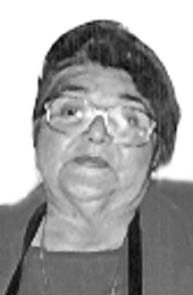After Dorisís death, the sky spoke of her
passing. The day that her body was brought home to lie in honor,
the sunset blazed with beautiful pastels. After her burial,
magnificent black-and-white storm clouds formed. The next day,
soft, cleansing rains and rainbows created a crisp brilliance
that emphasized the beauty of the season.
I was struck by the sense that as the heavens opened to
receive Dorisí soul, those of us who loved her were showered
with waves of grace. Our several days of vigil were marked
by prayers, songs, services, eulogies, grieving, forgiveness,
visions, dreams and healings. Friends of many faiths and spiritual
paths converged to create ceremony and give witness to memories
and stories that inspired us to open our hearts.


Doris was my next-door neighbor, my good friend, massage client
and a fellow lover of life and God. Our relationship was special.
Through the years, no matter what our state of mind or condition,
spending time together was always healing and uplifting. We
were so attuned to each other that I felt her call me when
she needed help, and I seemed to know when to seek her company
for a boost in spirit. Few visitors came to visit either of
us without our wanting to share them with each other. At Dorisís
house, I met many hilthen-matu (Indian doctors), ministers,
politicians, medical people, business and legal associates,
relatives, adopted relatives and friends. Her home was a place
where all were welcome. If you came to my house, I probably
took you next door to meet Doris on one or more occasions--to
sing, share food, meditate, pray or just say hello.

Doris was bedridden from a stroke and crippled from rheumatoid
arthritis, but her mind and imagination were always alive.
She loved conversation and especially enjoyed being read to.
Doris was a captive audience for articles and poems prior
to each printing of this magazine. If any reading lost her
interest or she became unsettled, I knew that piece needed
work. Her stamp of approval was clear when she made comments
such as "This story is most wonderful," or "Oh my, I see so
many pictures in my mind," or "That story reminds me
of what our shamans taught." Doris encouraged me in this publishing
project from the beginning--by helping me brainstorm and sell
ads, and by passing out magazines to the steady stream of
friends who came to visit from near and far.

When Doris died, Sojourn had completed three years and was
undergoing its rebirth as Grace Millennium. Little did I know
that the theme of this thirteenth issue, death and renewal,
would have such personal meaning for us.
Several synchronous events
occurred in Dorisís last days. The week before her death,
a new great-granddaughter was born into the family, down the
hospital hall from the room where Doris lay. This was very
auspicious according to native tradition. In Arizona, Dorisís
adopted daughter Sandra had a waking vision in which she saw
Doris fully restored and radiant, her eyes glowing , and her
body no longer disfigured from arthritis. The night Dorisí
daughter Donna asked the creator for a sign whether her mother
would die or recover, a good friend Jackie woke up with a
message from Doris: "I am leaving." These and other visions
led to decisions that allowed Doris a smooth and painless
transition.

Although her accomplishments were impressive, Doris never
dwelt in the past or asked for special recognition. Only after
her passing did I become aware of the extent of her service.
A gathering of tribal members recalled
her contributions, and Laney Fouse wrote an article that was
published on the front page of the November 12, 1999
edition of the Ukiah Daily Journal:
Doris served as the Coyote Valley
tribal administrator from 1976 until 1979 when she became
vice-chair of the Tribal Council. In 1981, she was appointed
its chairwoman, a position she held for fourteen years.
While serving as chairwoman, Doris
was instrumental in getting the land base in Redwood Valley
redesignated from a rancheria to what is now known as the
Coyote Valley Reservation. This opened the door for her to
obtain government housing for tribal members, and to have
a recreation building constructed. In 1993 she realized her
longtime dream--the opening of the Shodakai Coyote Valley
Casino, which now provides jobs to more than 200 local community
and tribal members.
Prior to becoming a tribal
leader, Doris worked as a registered nurse in hospitals in
California and Texas. Despite suffering from rheumatoid arthritis
for more than forty years, she traveled extensively throughout
the United States, and took a trip to China in the late 1980s.
She never let her disability stand in the way of her goals.
Doris was active at the state and national levels, was chairwoman
of the California Council of Tribal Governments, and was involved
in the California Elders program, the Consolidated Tribal
Health Consortium, the California Indian Health Consortium
and the Disability Board. She was also a member of the Native
American Language Committee, Indian Health Servicesí Tribal
Youth Committee, and the Mendocino County Economic Development
Commission. Doris was an advocate for the Title IV Indian
Education program and the bilingual/bicultural program. In
addition, she received a grant to establish a three-year pilot
program for juvenile justice in the courts.

Dorisí family was notified that the U.S. Congress would be
honoring her during their last session of the year. Her family
and friends were also invited to attend the California State
Senateís first session of the new millennium for a special
thirty-minute break to honor her memory.